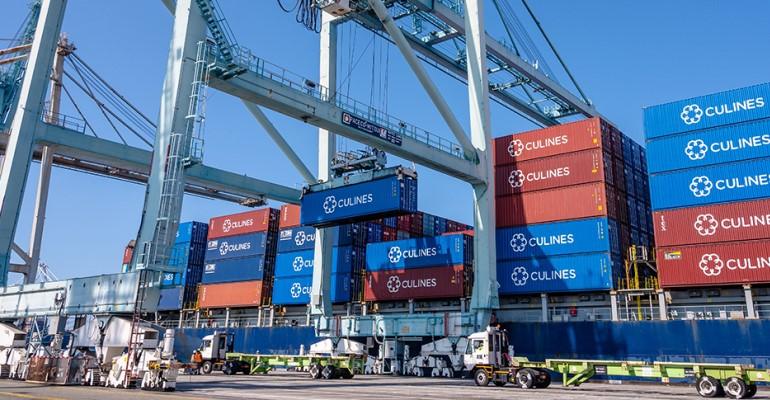Management Consultancy firm McKinsey & Company explored four supply and demand scenarios for the container sector over the next two years, but events may already have precluded its rapid recovery scenario.
“Rapid market recovery to 2019 levels” was the firm’s quickest route to a well-functioning logistics chain, with rates, demand and capacity reaching 2019 levels by Q3 2022. The scenario calls for successful interventions from regulators, more available labour and co-operation among stakeholders to unlock capacity gains.
Crucially, rapid market recovery supposes that “there are no significant external shocks or interruptions that disrupt operations,” a requirement which may already have been broken by COVID lockdowns in port and industrial areas in China.
McKinsey’s three other scenarios include a market economics play out, where capacity normalises by Q3 2023, but rates remain around 25% above 2019 levels, a slower capacity recovery where capacity is recovered by Q1 2024 and rates remain 50% above 2019 levels, and a failed recovery with elevated rates scenario, where full capacity does not return and rates remain elevated through 2024.
Expanding on its slower capacity recovery scenario, McKinsey said it would require marginal success from regulatory and operational interventions, modest growth and the release of some pent-up demand, and only minor, short-term interruptions to logistics operations.
Shipping rates under the scenario are expected to remain elevated through 2022 and 2023 contracting seasons before falling. “While ocean rates will come down, ocean carriers will better match capacity with demand, and shipping spot rates could stabilise at around 50% higher than pre-pandemic levels after Q1 2024,” said McKinsey.
With a minimum of five to six months of disruptions forecast, the firm said there were steps companies can take now to make their supply chains more resilient.
“There are opportunities to be creative with supply routes. For instance, some shippers have found Canadian ports (e.g., Prince Rupert) to be less congested than those in Southern California and still provide rail services into the US Mid-West. Other shippers are using all-water services to East Coast ports, where congestion is less severe. As another alternative, some shippers have shifted away from inland point intermodal container movements, towards transloads in the immediate port vicinity,” said McKinsey.
One solution to the complex contracting environment for 2022 was a mixed approach between contracting some volumes normally and leaving some exposure to the spot market. “To find the right balance, shippers should consider the value of goods in the container, substitute products, and the business trade-offs between high rates and supply-chain interruptions,” said McKinsey.
A move to enforceable contracts in ocean shipping, where shippers make firm take-or-pay commitments for volumes, should help reduce uncertainty across the sector, it added.
While short term option for manufacturers may be limited, medium term options include near-shoring, or suppliers not reliant on transpacific routes.
“Shippers can also re-evaluate their overall supply-chain design and strategy. The last 12 months have reminded shippers that relying on just-in-time supply from container shipping can be risky. Companies may need to increase inventories and safety buffers, both at departure and at arrival ports. This adds costs to the supply chain, which may lead to broader redesigns in product sourcing and manufacturing,” said McKinsey.
The full McKinsey article “Navigating the current disruption in containerized logistics” is available on their website.
Copyright © 2024. All rights reserved. Seatrade, a trading name of Informa Markets (UK) Limited.
Add Seatrade Maritime News to your Google News feed.  |

